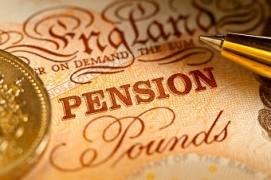Archived article
Please note that tax, investment, pension and ISA rules can change and the information and any views contained in this article may now be inaccurate.

Bank of England governor Mark Carney last week unveiled a series of “big bazooka” monetary policy stimuli designed to breathe life into the ailing UK economy.
In simple terms, the package of measures – a 25 basis point rate cut, injection of quantitative easing and access to cheap funding for banks – are designed to get people spending rather than saving.
They should mean that mortgage rates, for example, will fall, giving homeowners extra cash to spend in the shops.
However, the move is also likely to hit savers in a variety of ways, leading some to suggest now is the worst time in history to retire.
Annuity rates set to plunge…again
The rates insurers offer to people buying an annuity have been on the decline for years, primarily as a result of rising life expectancy.
However, record low interest rates have had a huge impact too. Insurers use Government gilt yields to price annuities, so a cut in the base rate puts further downward pressure on UK gilt yields and, in turn, annuity prices.
And the initial post-crisis bout of QE – which involves the Government buying up gilts – has also depressed gilt yields and annuity rates.
The effects of last week’s 25 basis point rate cut and £70bn injection of QE were obvious immediately.
On 4 August – the day of the Bank of England’s announcement – 10-year Government gilts were yielding just 0.74%. That was down from 0.91% a day earlier, and 1.98% 12 months earlier.
It’s likely only a matter of time before insurers announce another round of annuity rate cuts in response.
Drawdown dilemma
Plunging annuity rates could well spur savers to consider keeping their money invested through income drawdown. The picture is challenging here too, however.
Government gilts offer an almost risk-free return to investors – with this rate almost at zero, the search for attractive yields becomes ever more challenging.
That said, the FTSE 100 shot up by over 1% on the back of the announcement, so investors in UK equities could well have seen a small boost in the value of their pots.
However, pensions are a long-term game and the recent report from McKinsey warning equity returns are likely to be significantly lower over the next 20 years provides a sobering reality check for retirement investors. It’s therefore more important than ever savers are realistic about the returns they’ll get from the stock market.
The defined benefit question
The fallout from the BHS disaster has thrust the UK’s defined benefit pensions crisis back into the spotlight, and the combination of a rate cut and QE piles further pain onto scheme sponsors.
Gilt yields are used by actuaries to value DB liabilities, so a further drop in yields will push up already sky-high scheme deficits. Economists reckon for every 1% fall in gilt yields, liabilities increase a whopping 20%. Total UK DB liabilities are estimated at well over £2trn, deficits could well rise by tens of billions of pounds.
On the flip side, if the Bank of England’s monetary stimulus does the trick and boosts the UK economy, then the value of the assets DB schemes hold to pay out pensions may well rise.

